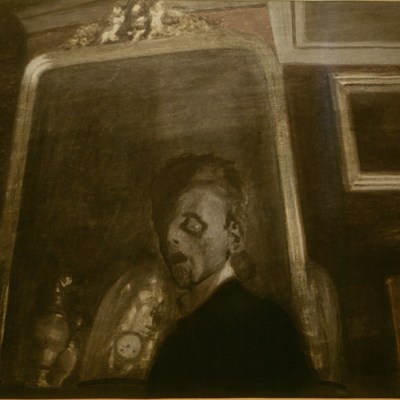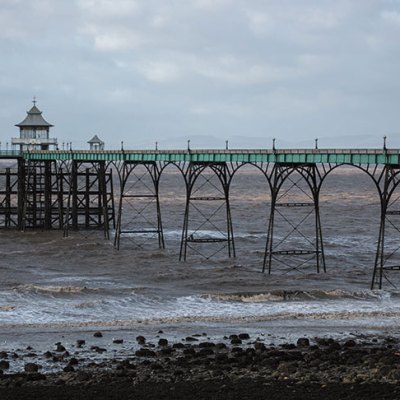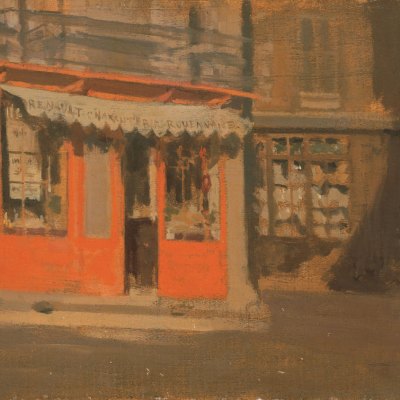Alongside the recommendations for restaurants and taxis, on the Tripadvisor forum for Bruges you will also find users debating the nature of the place. Is it one of the best-preserved medieval cities in Europe, or not nearly as authentic as it looks? Those in the latter group cite the Bonifacius Bridge, for example, which was built in 1910 but appears centuries older, and various 19th-century interventions regarded at the time as ‘restoration’ that today would be classed quite differently.
For Michel Dewilde, a curator at Musea Brugge, the historic city is an artificial construction: ‘a Disneyland’, he says. We are standing in the courtyard of the Gruuthusemuseum, which, to coincide with the Bruges Triennial, is hosting an exhibition called ‘Rebel Garden’ along with the Groeningemuseum and the Museum Sint-Janshospitaal. Beside us is Not Red But Green IV (2024) by Per Kristian Nygård. A framework sculpted into improbably steep hills covered in cropped turf, as perfect as the green hills of Windows XP’s wallpaper, the artwork suggests the human role in shaping our environments. Its flawless slopes are particularly suggestive in Flanders, where the unremittingly flat pastureland shows few signs of being scarred by trenches during the First World War.
Not Red But Green IV (2024), Per Kristian Nygård. Photo: Jan Darthet; courtesy Visit Bruges

While exploring the Bruges Triennial, which this year is themed ‘Spaces of Possibility’, the question of artificiality versus authenticity, the manmade versus the natural, often comes to mind. Some participants have responded to this brief quite literally. Raamland by architecture studio Norell/Rodhe is a community garden slotted into an neglected corner of the city where now, in place of detritus and weeds, is seating made of reclaimed building materials and a planting scheme that combines the ornamental with the edible. Similarly, the metal grid of Studio Ossidiana’s silo-shaped Earthsea Pavilion is studded with seedlings, intended to entice birds, bugs and visitors alike, while Firesong for the bees, a tree of clay by Mariana Castillo Deball combines ceramic sculptures inspired by the forms of ancient beehives with a real, live colony of bees. (A ‘beekeeping collective’ visits weekly, I’m told.)
No artworks from the Bruges Triennial become permanent fixtures, no matter how suited to the site or how popular with visitors, insect or otherwise. This is to preserve the historic appearance of this UNESCO World Heritage Site, a small city where space is at a premium. There are no such concerns in De Panne, a resort town on the nearby coast, which also hosts an arts festival this year. The eighth edition of the Beaufort Triennial takes place along almost the entirety of Belgium’s 67km coastline, connected by an enviable tram system – the longest in the world – that runs from Knokke-Heist in the north to De Panne in the south.
Attentifs ensemble (2024), Romain Weintzem. Photo: Ann-Sophie Deldycke; courtesy Beaufort 24

It’s an attractive area, with wind-swept sand dunes, wide beaches of white sand and a slightly faded charm reminiscent of the Isle of Wight or Folkestone – another resort town that has turned to art triennials to burnish its image. In De Panne, unlike Bruges, there is plenty of room. This means that many of the Triennial’s artworks can and do remain in situ in what’s called the Beaufort Sculpture Park (not so much a single park as a wide range of outdoor locations). There are already some 50 works dotted along the coastline, with more to come.
For this visitor, the highlight is a co-production between the Bruges and Beaufort triennials. Star of the Sea (2024) by Ivan Morison is a warren of Nancy Holt-like concrete tunnels piled on the beach of Zeebrugge, an industrial port as its backdrop. The work is impassable at high tide, but when the tide is low it emerges looking somewhere between a sandcastle and a bunker. (It’s easy to imagine Star of the Sea becoming a favourite with local teenagers: a private spot for a kiss or a smoke, cigarette ends washed away by the tide.)
Star of the Sea (2024), Ivan Morison. Photo: Jan Darthet; courtesy Visit Bruges/Beaufort 24/Bruges Triennial
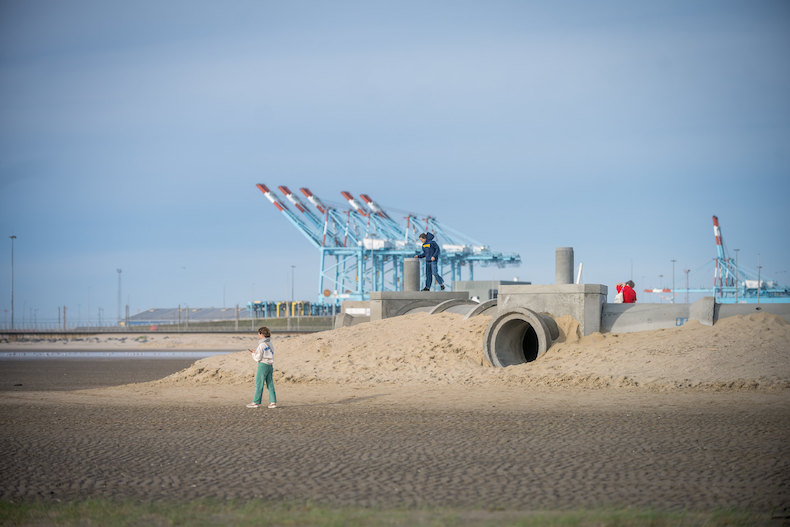
Star of the Sea is a hard act to follow. Beaufort’s theme, ‘Fabric of Life’, is perhaps too capacious for its own good and, despite the curator’s best efforts at rationalisation, some of its 18 artworks seem parachuted-in, unrelated to their context. (And is it necessary for every sculpture of a woman to be either naked or half-dressed?) At its best, though, the event presents works that are thoughtful and/or pleasingly pragmatic – not least those allowing visitors to sit down.
At Rest by Selva Aparicio is surprisingly affecting, for a bench. Its backrest comprises 4,400 bronze tiles bearing curved lines cast from the palms of locals. Aparicio visited markets, clubs and retirement homes to get these handprints; as time goes on, the work will become increasingly like a memento mori. At Rest connects to its location in other ways, too. Tucked in a corner of Nieuwpoort that is today a nature reserve, in 1914 it was part of the Western Front.
At Rest (2024) (2024; detail), Selva Aparicio. Photo: Ann-Sophie Deldycke; courtesy Beaufort 24
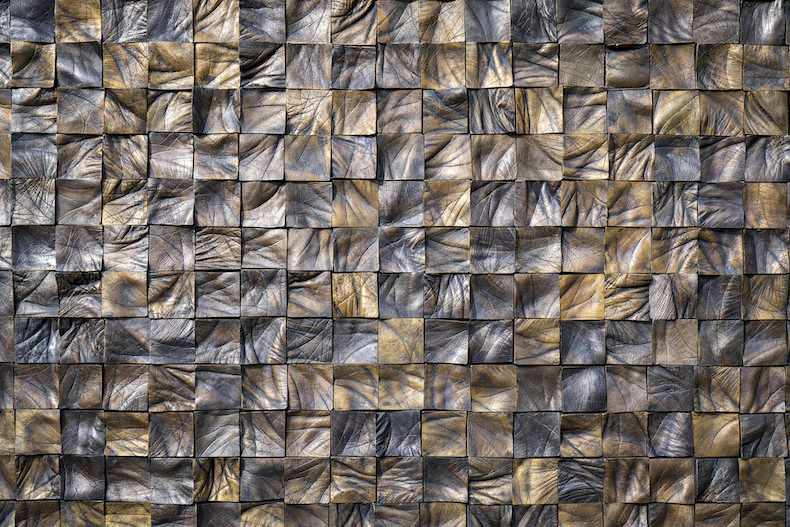
While at the dunes in Oostduinkerke to see Johan Creten’s The Herring (2022–23), a monumental sculpture of another nude woman, I’m delighted to spot a lone horserider heading into the sea, net in hand. What I’m witnessing belongs to a 500-year-old tradition, included on UNESCO’s list of intangible cultural heritage: horseback shrimp-fishing. Picturesque it may be, but this is not a practice performed solely for tourists – the rider is blissfully alone on the waves, the beach near-empty. Visitors to Bruges hungry for authenticity might do well to visit the Flemish coastline, too.
The Bruges Triennial takes place at various venues until 1 September. Beaufort24 takes place at various venues along the Belgian coast until 3 November.

